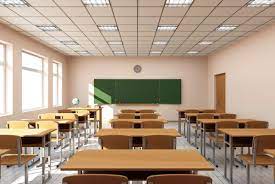COVID-19 Pandemic Leads to Innovations in Education in Saudi Arabia
Six million children benefited from Saudi Arabia’s innovative distance learning platform "Madrasati"
RIYADH — School closures due to the pandemic led to 6 million children being part of Saudi Arabia’s journey to digital and distance education. Around 98% of students in the Kingdom, logged into the “Madrasati” (“My School”) platform, which is a local bespoke learning platform, according to a new World Bank report titled, “Saudi Arabia’s Digital and Distance Education”.
The report identifies the strengths of the response to the COVID-19 pandemic in K–12 education and discusses the opportunities for educational improvement following the digital and distance education experience. The study was conducted on a nationally representative sample of almost 18,000 students, teachers, school principals, supervisors, and parents, with virtual classroom observations as the pandemic unfolded over the 2020-21 school year.
More than two-thirds of teachers believed that their students’ academic achievement and skills increased during the digital and distance education provided in Saudi Arabia in the 2020-21 school year, and there is high demand for more digital learning content.
“The COVID-19 pandemic brought unprecedented challenges to the development of human capital in Saudi Arabia, as it did in countries across the world,” said Issam Abousleiman, World Bank Regional Director for the GCC. “The story of Saudi Arabia’s journey to rapid and widespread digital and distance education is one that many countries are interested to learn from.”
Teachers reported increases in their students’ digital literacy, independent learning, time management, creativity, and problem solving. High satisfaction was expressed by teachers in the training and support they received during the transition to online learning.
“The COVID-19 pandemic has been a challenging time for all education systems,” said Keiko Miwa, Human Development Director. “Saudi Arabia’s experience illustrates the importance of supporting teachers to excel in their roles by providing them with useful tools, training, and guidance.”
Not all students thrived in digital and distance education. The experience was particularly difficult for the youngest learners and those without devices or having to share devices. The report also reveals some concerns over students’ feelings of isolation, boredom, laziness, lack of physical activity, eye strain, and absence of social interaction with peers. Around half of students felt that they would have learned more in the classroom, and most teachers, parents, and school principals wanted to see a return to in-person schooling, with continued use of Madrasati and the new digital resources.
All students in Saudi Arabia returned to in-person schooling during the 2021-22 school year. Blended learning models are being studied to better understand the future possibilities for education in the country.
To continue improving education following the experiences during the pandemic, the report recommends further efforts to identify and support students needing additional help, ensuring all students have the devices and connectivity they need for distance and blended learning, and to target teachers’ professional development to reduce variability and ensure all students have access to high-quality teaching.


Comments are closed.